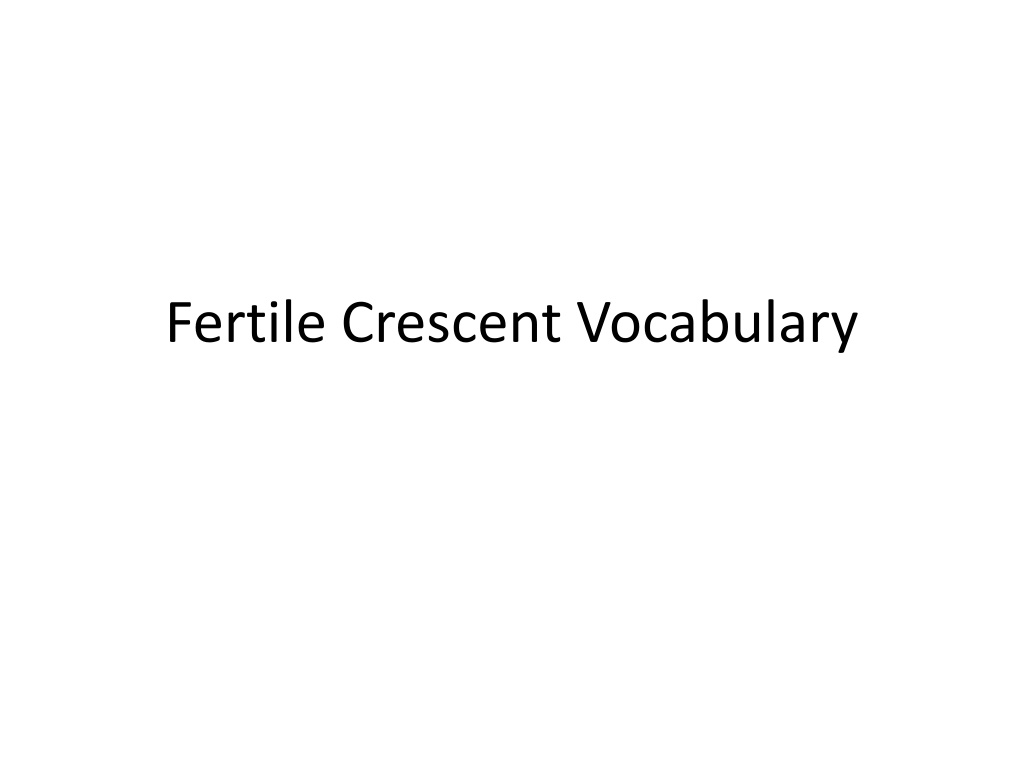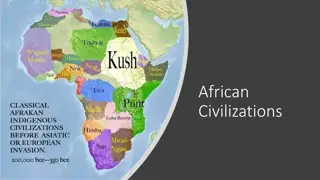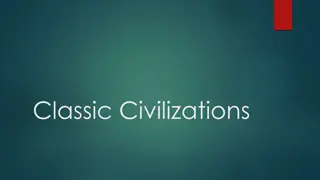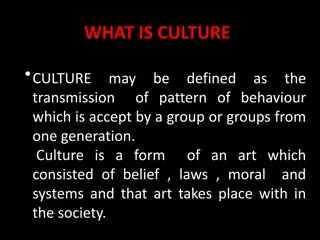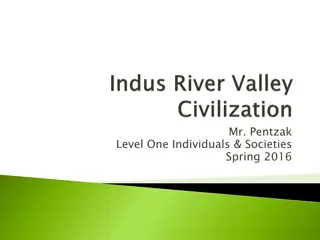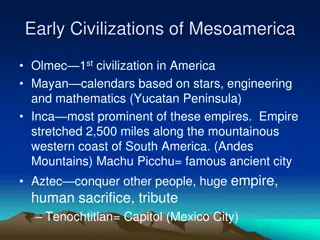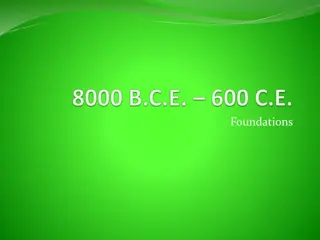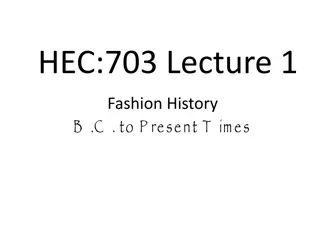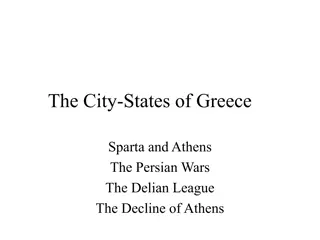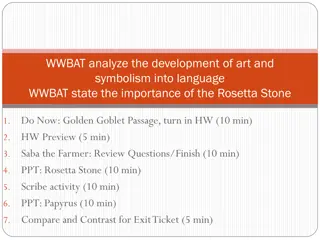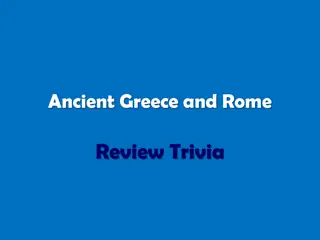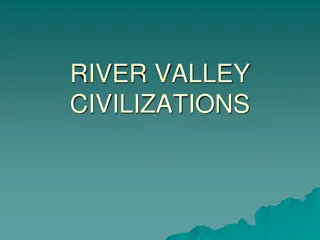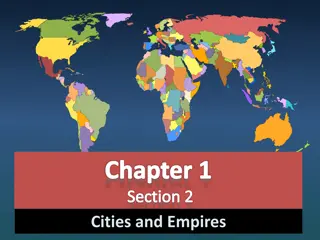Ancient Civilizations of the Fertile Crescent
Explore the geography and history of the Fertile Crescent, including Mesopotamia, Sumer, and later civilizations like Babylon. Learn about the rich farmland, nomadic lifestyle, irrigation methods, Sumerian achievements in writing, and the rise of empires under rulers like Sargon and Hammurabi.
Download Presentation

Please find below an Image/Link to download the presentation.
The content on the website is provided AS IS for your information and personal use only. It may not be sold, licensed, or shared on other websites without obtaining consent from the author. Download presentation by click this link. If you encounter any issues during the download, it is possible that the publisher has removed the file from their server.
E N D
Presentation Transcript
Geography of the Fertile Crescent Fertile Crescent a large arc of rich, or fertile, farmland. It extends from the Persian Gulf to the Mediterranean Sea. Mesopotamia Greek word that means between the rivers. It is located between the Tigris and Euphrates rivers
Geography of the Fertile Crescent Nomad-person who does not have a permanent home. Early people moved from place to place in search of resources. Silt a mixture of rich soil and tiny rocks. Silt is brought to Mesopotamia by the yearly flooding of the Tigris and Euphrates rivers.
Geography of the Fertile Crescent Irrigation a way of supplying water to an area of land. Sumer-World s first civilization. Started in Mesopotamia Sumerians the people of the world s first civilization. The Sumerians settled in Mesopotamia in 3000 BC City-state a central city and all the countryside around it.
The Rise of Sumer Polytheistic/Polytheism the worship of many gods Ziggurat- Sumerian temple Social hierarchy the division of society by rank or class.
Sumerian Achievements Cuneiform the world s first system of writing.
The Rise of Sumer Empire land with different territories and peoples under a single rule. Sargon Akkadian emperor who extended the Akkadian territory. He built a new capital, Akkad, on the Euphrates river, near what is now the city of Baghdad. Sargon established the world s first empire. He was also the first to have a permanent army.
Later Peoples of the Fertile Crescent Hammurabi- Babylonian ruler who built a city on the Euphrates river, near what is now Baghdad, Iraq. It had once been a Sumerian city. He became the city s greatest ruler. Hammurabi s Code a set of 282 laws that dealt with almost every part of daily life.
Later Peoples of the Fertile Crescent Hammurabi s Code Hammurabi s Code is written in Cuneiform. Stele located in the Louver Museum
Later Peoples of the Fertile Crescent Tribute-forced payment of goods or money Hanging Gardens of Babylon-tiered garden created by King Nebuchadnezzar. It was considered to be on the ancient wonders of the world. Caravans-group of traveling merchants
Later Peoples of the Fertile Crescent Phoenicians group of people on the western end of the Fertile Crescent. They were excellent sailors , therefore, they were able to trade all around the Mediterranean area. Their most famous city was Carthage located in northern Africa. They created one of the world s first alphabets. They alphabet we use today is based on the Phoenicians
Later Peoples of the Fertile Crescent Chaldeans group of people from the Syrian Desert who defeated the Assyrian Empire. Their most famous king was Nebuchadnezzar. He rebuilt the city of Babylon. Chariot a wheeled horse-drawn cart used in battle. Assyrians group of people who in 900 BC began to conquer all of the Fertile Crescent. Their capital city was Nineveh. Their army was very well organized and skilled.
